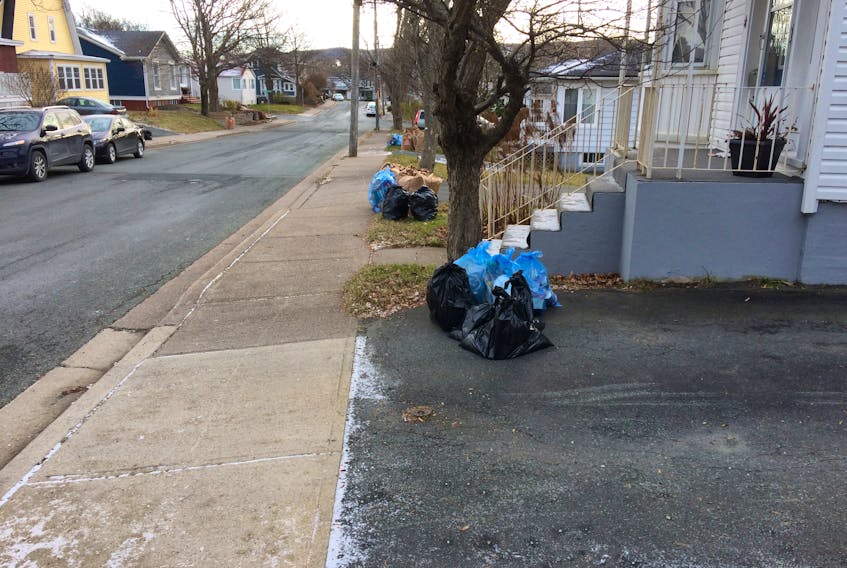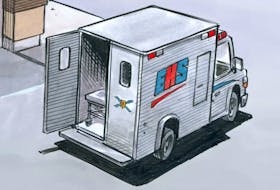Water finds its own level. Nature abhors a vacuum. There are any number of sayings that explain the way the world settles out.
But there’s a small economics paper to be written about the way the recycling industry is shaking out in the capital city, and it’s more complicated than you might think.

When curbside recycling started in St. John’s, I wrote about the bottle guys, wondering in print about the collision between a small form of independent business and a city that needed to support its own recycling effort, and where things would shake out.
Well, shake out they have, but things have gotten more complex than just two sides. In the middle of it, in his own segment of the underground economy, is a guy I’m just going to call Mike, because he operates essentially underground.
He’s pretty blunt: he’s hauling bottles in all kinds of weather because you can’t live on the rates paid for single social assistance recipients.
He works the city’s recycling routes in the narrow gap between when neighbours put their recycling out and when the city trucks come to get it.
He works hard and he works neat, opening blue bags, taking and sorting the plastics and cans before leaving the non-deposit recyclables in the bags he found them in. His cart blossoms with overfilled clear plastic bags, a shopping cart easily three times its normal width with the load.
His story is one of a long-running back injury he’s finally escaped, and the twin pits of despair known as disability and social assistance. He’s pretty blunt: he’s hauling bottles in all kinds of weather because you can’t live on the rates paid for single social assistance recipients.
But he’s only one small part of the recycling strata. It’s like different fishing fleets or different sizes of farming enterprises.
There are still some of the originals left — the people who push shopping carts and either knock on doors or collect along an established route of “customers.” They’re the ones that still take glass bottles for the deposits, something the city’s program does not.
Then, there are the shopping cart high-graders like Mike. Some are tidy — others are not, tearing into the side of recycling bags for valuable, lighter things like beer cans.
There’s even another level, even better equipped: they swoop through neighbourhoods on recycling day in private vehicles, often vans, grabbing whole bags with a high proportion of the more valuable materials, loading them up and driving away. What happens to the recyclable materials that can’t be cashed in for deposits in those loads is anybody’s guess; the best hope is that they get sorted back into blue bags and make their way into the city’s recycling stream somewhere else in St. John’s.
At the top, of course, is the city itself. The city has built its program based on being able to recover enough valuable material to cover the program’s costs. So far, it still is.
“The practice of people circling through residential areas on recycling days and collecting deposit return containers is discouraged, however this practice does not add any measurable costs or loss of revenue to the city. The city has not experienced a decrease in the volume of recyclables collected at the curb,” writes Kelly Maguire, a communications officer with the City of St. John’s.
So far, so good.
This is not to say that it’s all a harmonious time in the under-market of recycling. It’s not. There’s friction, arguments and sometimes hands-on disputes between the different levels, and between individual collectors who feel others are poaching on their turf.
Mike’s had words with the grab-and-go bag raiders, because their mess affects his interactions with homeowners.
But the city says 65 per cent of households are taking part in the curbside program, and it’s kept more than 20,000 tonnes of waste out of Robin Hood Bay.
It’s also putting money — into a variety of pockets
Russell Wangersky’s column appears in 35 SaltWire newspapers and websites in Atlantic Canada. He can be reached at [email protected] — Twitter: @wangersky.









